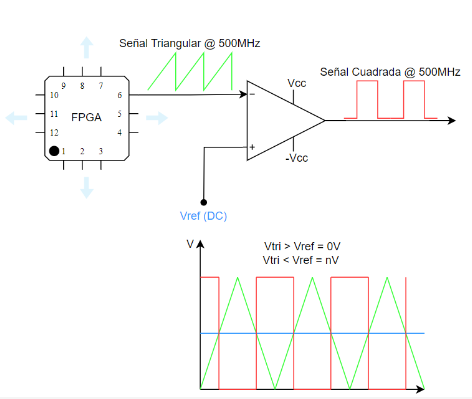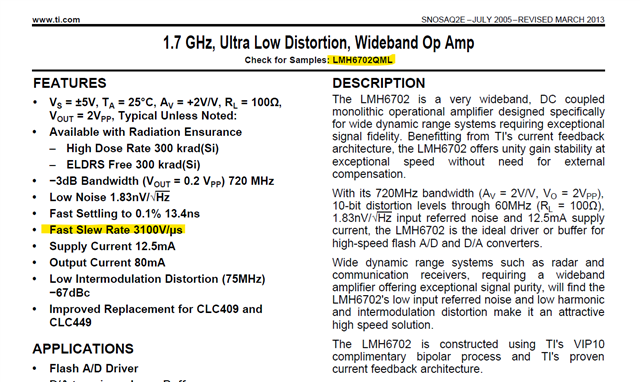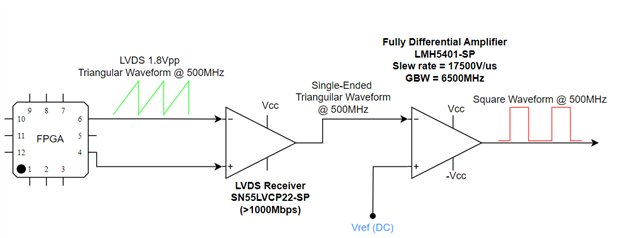Other Parts Discussed in Thread: TLV3801, SN55LVCP22-SP, LMH5401-SP, THS4304-SP, LMH5401
Tool/software:
Hello,
My name is Pablo and I need to convert a highspeed 500MHz triagular signal into a 500MHz squared signal.
I am thinking of using a comparator using the LMH6702QML-SP operational amplifier, the circuit proposed is

As I see in the LMH6702QML-SP datasheet it has a slew rate = 3100V/us, so if the input signal voltage is 1.8V we will have 1.8V*1us/3100V= 0.58ns, input to output response time.
As 500MHz period is 2n, would this device be okey in order to perform this need?

Thank you very much in advanced.
Pablo


